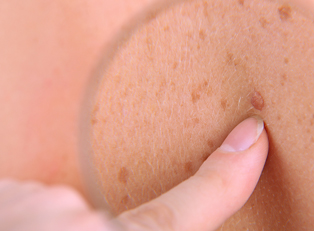Your squamous cells are thin, flat cells that make up the outer layer of your skin. Squamous cell carcinoma is a common type of skin cancer that begins in these cells. An estimated 700,000 cases of squamous cell carcinoma are diagnosed in the United States each year, which is up 200% from the past three decades.
Symptoms
It is most common for squamous cell carcinoma to occur on areas of skin that are the most exposed to sun, such as your scalp, your ears, and the backs of your hands. However, it is possible for squamous cell carcinoma to develop on other parts of your body, such as inside your mouth, on your anus, or on your genitals.
The signs and symptoms to watch for that might indicate you have squamous cell carcinoma include:
- A flat sore with a scaly crust
- A new sore or raised area on an old scar or ulcer
- A firm, red nodule
- A rough, scaly patch on your lip that may turn into an open sore
- A raised, red patch or wart-like sore on or in your anus or genitals
- A rough patch or red sore on the inside of your mouth
If you have any sores, scabs, or flat patches of scaly skin that won’t heal or go away after two months, see your doctor right away.
Causes and Risk Factors
Squamous cell carcinoma is caused by a mutation in the DNA of the squamous skin cells. Disruptions in the DNA pattern causes cells to grow out of control, and the accumulation of abnormal cells will eventually lead to a tumor. Though it is not certain what exactly causes the cell DNA to mutate, there are certain factors that are known to increase your risk. They include:
- Excessive sun exposure: Spending lots of time in the sun will increase your risk for squamous cell carcinoma, especially if you don’t cover your skin or use sun screen.
- Use of tanning beds: Using tanning beds significantly increases your exposure to ultraviolet light, which increases your risk of skin cancer.
- History of sunburns: If you have had one or more blistering sunburns as a child or teenager, this will increase your risk of developing skin cancer as an adult.
- Fair skin: Though people with any skin color can get squamous cell carcinoma, having fair skin that burns and freckles easily will increase your risk more than someone with a darker complexion.
- Personal history: If you have had precancerous lesions or skin cancer in the past, you are more likely to develop it again.
- Inherited genetic disorders: A rare disorder called xeroderma pigmentosum causes extreme sensitivity to sunlight and increases your risk of developing skin cancer.
- Weakened immune system: People who have a weakened immune system because of certain diseases or medications will have an increased risk for squamous cell carcinoma.
Treatments
Most squamous cell carcinomas are able to be completely removed with minor surgery. Sometimes a topical medication is used as well. The exact treatment plan for your squamous cell carcinoma will depend on your personal preferences, as well as the size, location, and aggressiveness of the tumor.



